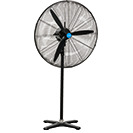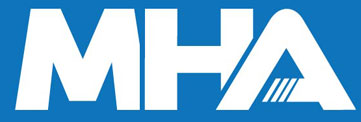Material Handling Equipment: A Comprehensive Guide
Date Posted:4 September 2024
Selecting the right material handling equipment is critical for the smooth operation of any warehouse or industrial facility.
In the heart of any efficient warehouse or production facility lies the unsung hero – materials handling equipment. From forklifts zipping through aisles to conveyors transporting goods seamlessly, these tools are the backbone of streamlined operations. For businesses across Australia, understanding the ins and outs of material handling equipment is crucial to maintaining productivity, safety, and cost-effectiveness. Here's your comprehensive guide to navigating the world of material handling equipment.
Understanding Material Handling Equipment
Material handling equipment encompasses a wide range of tools, vehicles, and systems designed to move, store, protect, and control materials throughout the manufacturing, distribution, consumption, and disposal processes. These can be broadly categorised into four types:
-
Storage and Handling Equipment: These include shelves, racks, pallets, and bins, designed to store products in an organised manner.
-
Engineered Systems: Automated systems such as conveyors, robotic delivery systems, and automated storage and retrieval systems (AS/RS) that streamline the movement of goods.
-
Industrial Trucks: Vehicles like pallet jacks, hand trucks and forklifts used to transport materials.
-
Bulk Material Handling Equipment: Equipment such as conveyors, stackers, and hoppers used to handle bulk materials like grains, coal, or minerals.
Choosing the Right Equipment
Selecting the appropriate material handling equipment depends on several factors:
-
Nature of Materials: Consider the size, weight, and fragility of the materials you handle. For instance, delicate electronics require different handling equipment than heavy machinery parts.
-
Warehouse Layout: The size and layout of your warehouse will influence the type of equipment needed. Tight spaces might benefit from compact, manoeuvrable equipment, while larger spaces can accommodate bigger machinery.
-
Volume of Operations: High-volume operations may require more automated solutions to keep up with demand, whereas smaller operations might rely more on manual or semi-automated equipment.
Key Equipment Categories
-
Storage Solutions
-
Heavy Duty Cabinets: Essential for maximising vertical space, these systems are ideal for storing heavy goods.
-
Heavy Duty Shelving: Adjustable shelving is perfect for smaller items and can be customised to fit various needs.
-
-
Engineered Systems
-
Conveyor Systems: Ideal for moving products across the warehouse, reducing the need for manual labour and speeding up processes.
-
AS/RS: Automated systems that store and retrieve products efficiently, minimising the need for human intervention and maximising space usage.
-
-
Industrial Trucks
-
Forklifts: Versatile and robust, forklifts are indispensable for lifting and transporting heavy pallets. Available in electric, gas, and diesel models to suit different environments.
-
Pallet Jacks: Both manual and electric pallet jacks are perfect for moving pallets over short distances.
-
Hand Trucks: Lightweight and easy to use, hand trucks are great for moving smaller loads and boxes.
-
-
Bulk Material Handling
-
Conveyors: Used extensively in industries handling large volumes of bulk materials, these systems are designed for efficiency and reliability.
-
Bucket Elevators: Ideal for vertical lifting of bulk materials, providing an efficient solution for moving materials to higher levels.
-
Safety and Ergonomics
Safety is paramount when it comes to material handling. Here are some tips to ensure safe and ergonomic use of equipment:
-
Training: Ensure all employees are properly trained in the use of material handling equipment. Regular refresher courses can help keep safety protocols top of mind.
-
Maintenance: Regular maintenance of equipment is crucial to prevent accidents and ensure longevity. Follow manufacturer guidelines for routine checks and servicing.
-
Ergonomics: Choose equipment designed to minimise physical strain. Features like adjustable handles, non-slip surfaces, and intuitive controls can help reduce the risk of musculoskeletal injuries.
Cost Considerations
While high-quality material handling equipment represents a significant investment, it's essential to consider the long-term benefits:
-
Efficiency: Efficient equipment reduces the time and labour required to move and store materials, leading to increased productivity.
-
Safety: Investing in equipment with robust safety features can prevent costly accidents and downtime.
-
Durability: High-quality equipment often has a longer lifespan, reducing the need for frequent replacements and repairs.
Trends and Innovations
The material handling industry is continually evolving with new technologies and innovations. Some current trends include:
-
Automation: Increasing automation in warehouses, from robotic picking systems to automated guided vehicles (AGVs), is revolutionising material handling.
-
Sustainability: Eco-friendly equipment and practices are becoming more prevalent as businesses strive to reduce their environmental footprint.
-
IoT Integration: The Internet of Things (IoT) allows for real-time tracking and monitoring of equipment, enhancing efficiency and maintenance.
Trusted Brands in Material Handling Equipment
When investing in material handling equipment, it’s essential to choose brands known for quality, innovation, and reliability. At Verdex, we’re proud to supply industry-leading names across a broad range of solutions:
-
Verdex: Our in-house brand delivering reliable, cost-effective solutions tailored to Australian industries.
-
Bishamon: Known for ergonomic lifting solutions and durable hydraulic lifts.
-
Fischer: A trusted name in storage and material handling products built for industrial environments.
-
Liftex: Experts in lifting and hoisting gear for a variety of heavy-duty applications.
-
Nally: Specialists in storage bins, tubs, and containers for organised materials management.
-
Palomat: Pioneers in pallet magazine solutions, designed to automate pallet handling safely and efficiently.
-
V-Cart: Offering multi-purpose trolleys built for flexibility and durability in busy workplaces.
-
Ezi-MT: Cost-effective waste management solutions.
These manufacturers are committed to delivering safe, efficient, and purpose-built equipment for Australian operations. Explore the full range through the links above to find the best solution for your business.
Need Help Choosing the Right Equipment?
Selecting the right material handling equipment can be complex—but you don’t have to do it alone. Whether you're outfitting a new warehouse or upgrading your current setup, the team at Verdex is here to help. Our experienced specialists can guide you through the options, ensure compliance with safety standards, and match you with trusted brands that suit your operational needs.
Contact us today for personalised advice and tailored recommendations by:
-
Calling our toll-free number 1800 750 500
-
Emailing us at sales@verdex.com.au
-
Filling out our contact form






















































































 Trolleys & Hand Trucks
Trolleys & Hand Trucks Cage Trolleys
Cage Trolleys Cleaning Carts & Trolleys
Cleaning Carts & Trolleys Construction Trolleys
Construction Trolleys Custom Trolleys
Custom Trolleys Hand Trucks & Dollies
Hand Trucks & Dollies Laundry/Linen Trolleys
Laundry/Linen Trolleys Lifting Trolleys
Lifting Trolleys Order Picking Trolleys
Order Picking Trolleys Panel Cart Trolleys
Panel Cart Trolleys Platform Trolleys
Platform Trolleys Powered Trolleys
Powered Trolleys Shelf & Tiered Trolleys
Shelf & Tiered Trolleys Shopping Trolleys
Shopping Trolleys Stainless Steel Trolleys
Stainless Steel Trolleys Tool Trolleys
Tool Trolleys Utility & Service Carts
Utility & Service Carts Lifting & Handling Equipment
Lifting & Handling Equipment Forklift Attachments
Forklift Attachments Jib Attachments
Jib Attachments Lifting Hoists & Pallet Hooks
Lifting Hoists & Pallet Hooks Load Skates & Tow Tugs
Load Skates & Tow Tugs Manual Stackers & Lifters
Manual Stackers & Lifters Pallet Jacks
Pallet Jacks Pallet Lifters
Pallet Lifters Pallet Rotators & Dispenser
Pallet Rotators & Dispenser Powered Pallet Trucks & Electric Lifters
Powered Pallet Trucks & Electric Lifters Scissor Lift Trolleys and Tables
Scissor Lift Trolleys and Tables Conveyor Equipment
Conveyor Equipment Conveyor Frames & Stands
Conveyor Frames & Stands Roller & Skate Conveyors
Roller & Skate Conveyors Ladders & Access Equipment
Ladders & Access Equipment Container & Yard Ramps
Container & Yard Ramps Ladders & Step Stools
Ladders & Step Stools Work Platforms & Crane Cages
Work Platforms & Crane Cages Drum Handling Equipment
Drum Handling Equipment Drum Storage & Bunding
Drum Storage & Bunding Drum Trolleys & Lifters
Drum Trolleys & Lifters Forklift Drum Handling
Forklift Drum Handling Waste Handling & Bins
Waste Handling & Bins Bin Lifters & Tippers
Bin Lifters & Tippers Plastic Waste & Wheelie Bins
Plastic Waste & Wheelie Bins Steel Waste & Tipping Bins
Steel Waste & Tipping Bins Waste Carts
Waste Carts Dangerous Goods Storage & Spillage
Dangerous Goods Storage & Spillage Aerosol Cans Storage Cages
Aerosol Cans Storage Cages Bunded Pallets & Storage
Bunded Pallets & Storage Corrosive Goods Storage Cabinets
Corrosive Goods Storage Cabinets DG Storage & Trolleys
DG Storage & Trolleys Flammable Liquid Cabinets
Flammable Liquid Cabinets Forklift Gas Storage Cages
Forklift Gas Storage Cages Site Storage
Site Storage Spill Kits
Spill Kits Shelving & Storage Equipment
Shelving & Storage Equipment Stillage & Transport Cages
Stillage & Transport Cages 750 Series Cage Configurations
750 Series Cage Configurations Heavy Duty Cabinets
Heavy Duty Cabinets Heavy Duty Shelving
Heavy Duty Shelving Mega Bins & Pallets
Mega Bins & Pallets Packing & Workbenches
Packing & Workbenches Parts Trays & Stor-Pak Bins
Parts Trays & Stor-Pak Bins Pegboard & Louvre Panels
Pegboard & Louvre Panels Plastic Bins & Crates
Plastic Bins & Crates Plastic Handling Solutions Bins
Plastic Handling Solutions Bins Plastic Pallets
Plastic Pallets Stack & Nest Bins
Stack & Nest Bins Pallet Racking Accessories
Pallet Racking Accessories Workplace Equipment
Workplace Equipment Modular Workbenches
Modular Workbenches Electric Height-Adjustable Workbenches
Electric Height-Adjustable Workbenches Floor Matting
Floor Matting General Workplace Equipment
General Workplace Equipment Industrial Weighing Scales
Industrial Weighing Scales Packaging Machinery
Packaging Machinery Stationery Cupboards
Stationery Cupboards Storage and Stillage Cages
Storage and Stillage Cages Tool Trolleys
Tool Trolleys Tooling Cabinets
Tooling Cabinets Workshop Fans and Coolers
Workshop Fans and Coolers Safety Barriers, PPE & Signage
Safety Barriers, PPE & Signage Barriers & Bollards
Barriers & Bollards First Aid Equipment
First Aid Equipment Gloves, Knives and PPE
Gloves, Knives and PPE Signage
Signage Cleaning & Site Supplies
Cleaning & Site Supplies Cleaning Equipment
Cleaning Equipment Cleaning Trolleys
Cleaning Trolleys Rubbish Bins
Rubbish Bins Signs & Traffic Supplies
Signs & Traffic Supplies Construction Equipment
Construction Equipment Construction Trolleys
Construction Trolleys Waste Handling
Waste Handling General Site Equipment
General Site Equipment Concrete Equipment
Concrete Equipment Site Storage
Site Storage Lifting Equipment
Lifting Equipment










